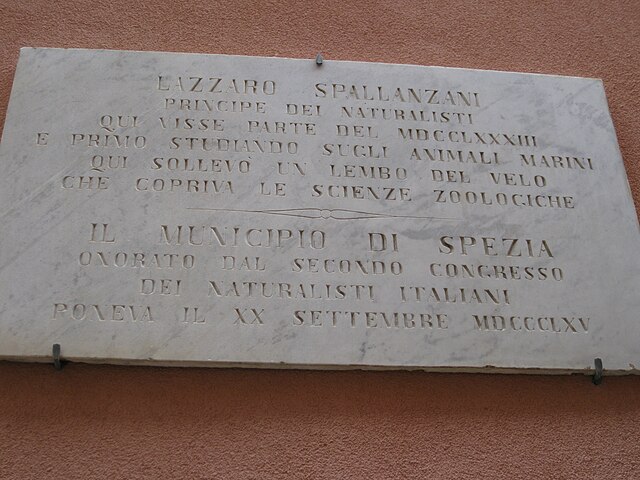Lazzaro Spallanzani was an Italian Catholic priest, biologist and physiologist who made important contributions to the experimental study of bodily functions, animal reproduction, and animal echolocation. His research on biogenesis paved the way for the downfall of the theory of spontaneous generation, a prevailing idea at the time that organisms develop from inanimate matters, though the final death blow to the idea was dealt by French scientist Louis Pasteur a century later.
Lazzaro Spallanzani
The statue of Spallanzani in Scandiano has him examining a frog through a magnifying glass.
Plaque dedicated to Spallanzani in Portovenere, Italy
Viaggi alle Due Sicilie e in alcune parti dell'Appennino, 1792
Echolocation, also called bio sonar, is a biological active sonar used by several animal groups, both in the air and underwater. Echolocating animals emit calls and listen to the echoes of those calls that return from various objects near them. They use these echoes to locate and identify the objects. Echolocation is used for navigation, foraging, and hunting prey.
The especially long tails on the hindwings of the African moon moth, a Saturniid, oscillate in flight, deflecting the hunting bat's attack to the tails and thus enabling the moth to evade capture.





